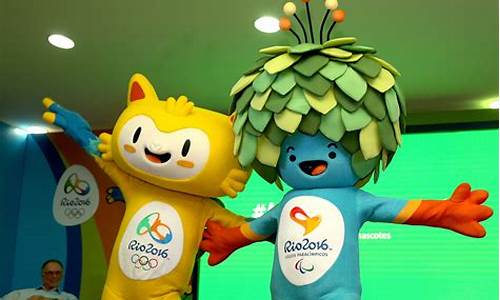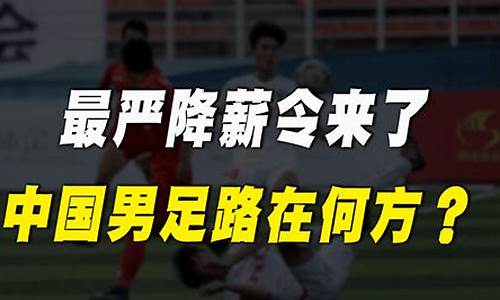奥运会吉祥物英语介绍,奥运会吉祥物英文介绍
1.奥运会吉祥物 动物 英语
2.可以用英文介绍一下奥运会的吉祥物吗?
3.2008年北京奥运会已经在北京举办成功 假如你当时是一名志愿者 ni如何向外国(查一篇英语作文)
4.2008北京奥运会吉祥物福娃的介绍(英语的)
5.小学英语作文 描述2008年奥运会最喜欢的吉祥物

1.The emblem of Beijing Winter Olympic Games is“winter dream”.
北京冬奥会会徽为“冬梦”
2022北京冬奥会
2.Theme slogan to the future together.
主题是一起向未来
3.Together,they pointed out the wayto overcome difficulties and create a successful future.
一起指明了战胜困难,开创未来的成功之道.
4.It expresses mankind‘s vision for a better tomorrow.
表达了人类对美好明天的憧憬
5.There are two mascots for Beijing Olympic Games.
北京冬奥会有两个吉祥物
6.Ice Bing dwen dwen is pure and strong and ice is also winer olympic.
冰墩墩名字中的冰象征纯洁和坚强,冰也是冬奥会的特征
冰墩墩
7.Shuey Rhon Rhon is the lantern.Lantern have distinctive China cultural characteristics.
雪容融形象来源于灯笼。灯笼具有鲜明的中国文化特色
雪容融
8.The pure olympic games shine over the bird‘s nest.
纯洁的奥运五环在鸟巢上空闪耀
9.The relation between ice and snow and China will open a new chapter.
冰雪与中国的情缘将开启新的篇章
10.Let‘s move towards a better future together.
让我们一同携手,一起走向美好未来!
奥运会吉祥物 动物 英语
China is an everyone's court for harmonize, we are living under the environment that dulcify thus, everybody is a happy child.The mascot" the FU WA" of the Olympic game also just represented us this is happy.Innocent child.
The FU WA is be"ed face"" clear and bright"" the NINI" of" the shell shell" by" the HUANHUAN" five be filled with the Chinese race special features of doll constitute.The homophonic of five FU WA name add exactly" Peking is welcome you".This expressed the Chinese people's amity to the people in the world again.The color of the FU WA also acts in cooperation the Olympics at the right moment five yellow turquoise blue of red orange of wreaths, expressed perfect annotation of Olympics to spirit of Olympics of Peking.
The Olympics of 2008 Pekings, the dream of a Chinese, bears in the applause of the world and the tears of the Chinese nations.Be a member of the Chinese nation, I will use the most sincere voice, saying loudly:
" Bless you, belong to China, belong to Peking, belong to our 2008!"
中国是一个和谐的大家庭,我们生活在这样愉悦的环境下,每个人都是幸福的孩子。奥运会的吉祥物“福娃”也正代表了我们这群幸福的.天真的孩子。
福娃是由“欢欢”“迎迎”“贝贝”“晶晶”“妮妮”五个充满中国民族特色的娃娃组成。五个福娃名字的谐音加起来正是“北京欢迎您”。这再一次表达了中国人民对世界人民的友好。福娃的颜色也正好呼应奥运五环红橙黄绿蓝,表现了北京奥运对奥运精神的完美诠释。
2008北京奥运,一个中国人的梦想,在世界的掌声和中华民族的泪水中诞生。身为中华民族的一份子,我将用最真诚的声音,大声说:
“祝福你,属于中国,属于北京,属于我们的2008!”
可以用英文介绍一下奥运会的吉祥物吗?
Recently several Olympic Games mascot figures gradually had a sole cartoon image transformation were already two even many, these our mascot figure has set the record in the Olympic Games history record, altogether had 5 images to vary, the lively lovable cartoon image, just echoed with Olympic Games' five links: the people gave a very pleasant to hear very propitious name for the lovable Beijing Olympic Games mascot figure - - “the lucky baby” (Friendlies), they respectively are the fish baby “the shell shell” (fish), the panda baby “clear” (panda), the fire baby “happy” (Olympic flame), the Tibet antelope baby “welcome” (Tibetan antelope) and the swallow baby “Nini” (swallow), they in constituted an all Chinese “Beijing to welcome you” together to people of the world's invitation (Beijing welcomes you).
2008年北京奥运会已经在北京举办成功 假如你当时是一名志愿者 ni如何向外国(查一篇英语作文)
Beijing has unveiled its five 2008 Olympic mascots the Five Friendlies to coincide with the 1,000-day countdown to the big event.
It is the first time in Olympic history that five mascots have been chosen.
Each mascot has a rhyming two-syllable name, the traditional way of expressing affection for children in China. Beibei is the Fish, Jingjing is the Panda, Huanhuan is the Olympic Flame, Yingying is the Tibetan Antelope and Nini is the Swallow.
The first characters of their two-syllable names read "Beijing Huanying Ni," or, in English, "Welcome to Beijing."
"The mascots are a special gift that Beijing presents to the world and to the Olympic Movement," said Liu Qi, president of the Beijing Organizing Committee for the Games of the XXIX Olympiad (BOCOG).
During a gala show on Friday evening, huge inflated cartoon figures of the mascots walked on stage amid a standing ovation from the audience in the Workers' Stadium.
The mascots, together with the official emblem and slogan of the 2008 Games, express Chinese people's wishes for peace, friendship, progress and harmony, Liu said.
The mascots have distinctive Chinese characteristics, representing not only the multi-ethnic cultures of China, but also the traditional Chinese philosophy of harmony between humans and nature, Liu noted.
Chosen in line with the colours of the Olympic Rings, they embody the landscape, dreams and aspirations of people from every part of China.
They also represent the five elements of nature the sea, forests, fire, earth and sky all stylistically rendered in ways that reflect the deep traditional influences of Chinese folk art and ornamentation.
"Five" also matches the five elements (metal, wood, water, fire and earth) believed by ancient Chinese people to explain the origins of the world.
Jacques Rogge, president of the International Olympic Committee (IOC), sent a congratulatory letter to the BOCOG saying China was "lucky to have so many beautiful animals to represent the Olympic spirit. I love them all. I believe that this little group of friends ... will be extremely popular and will help to spread Olympic messages throughout the world."
He added in the letter: "You've certainly touched my heart with your choices. And I'm sure the Five Friendlies will touch the heart of the world."
"The mascots are very cute and very creative," said Luo Yuan, an English teacher at Nanjing University of Technology in Jiangsu Province, East China.
"I like the yellow and red ones (the antelope and flame)," said Ning Chengzhe, a six-year-old pupil in Zhengzhou, the capital of Henan Province, Central China.
But Wang Bin, a bank employee in Beijing, said there were too many mascots and they were "hard to remember."
The "Five Friendlies" combine human and animal images. It is the first time an Olympic element, the Olympic flame, has been included in the mascots.
The 2000 Sydney Games featured three animal mascots Olly the Kookaburra, Syd the Platypus and Millie the Spiny Anteater.
The first mascot to appear at an Olympics was during the 1968 Winter Games in Grenoble, France, although Schuss the skier was not official. The first official mascot was Waldi the Dachshund, who appeared at the Munich Summer Games in 1972. Since then, the mascots have become a main element of the Olympic image. They have acted as a vehicle to convey the Olympic spirit to the general public, especially to children.
The "Five Friendlies" and other Olympic mascot merchandise will be on sale in authorized outlets in Beijing and other major Chinese cities.
"The launch of the mascot will bring sales of Olympic products to new heights," said Lai Ming, deputy director of the Marketing Department of BOCOG.
He believed the sales volume will be bigger than in previous Olympic Games.
Competition was hot with 662 entries, of which 611 were from the Chinese mainland, 12 from Hong Kong, Macao and Taiwan, and 39 from abroad. Many places wanted their local symbols picked as mascots.
China's western Qinghai Province pushed hard for the endangered Tibetan antelope, Fujian Province touted the South China tiger, Gansu favoured the mythical dragon and Jiangsu promoted the legendary Monkey King.(China Daily)
2008北京奥运会吉祥物福娃的介绍(英语的)
Beijing is the capital of China with a long history. There are quite a lot of places of interest, such as the Great Wall, the Forbidden City, the Summer Palace and so on. As you know, Beijing lies in the north of China, so the winter here is long and it snows sometimes. Autumn is the best season to come to Beijing, because it’s cool. We also have lots of delicious foods in Beijing and Beijing Duck is the most famous one. I’m glad to say that Beijing will hold the 2008 Olympic Games.This will give us the chance to let the world know more about China and Beijing. Welcome to Beijing and I’m sure you’ll enjoy it.
小学英语作文 描述2008年奥运会最喜欢的吉祥物
Like the Five Olympic Rings from which they draw their color and inspiration, Fuwa will serve as the Official Mascots of Beijing 2008 Olympic Games, carrying a message of friendship and peace -- and good wishes from China -- to children all over the world.
Designed to express the playful qualities of five little children who form an intimate circle of friends, Fuwa also embody the natural characteristics of four of China's most popular animals -- the Fish, the Panda, the Tibetan Antelope, the Swallow -- and the Olympic Flame.
Each of Fuwa has a rhyming two-syllable name -- a traditional way of expressing affection for children in China. Beibei is the Fish, Jingjing is the Panda, Huanhuan is the Olympic Flame, Yingying is the Tibetan Antelope and Nini is the Swallow.
When you put their names together -- Bei Jing Huan Ying Ni -- they say "Welcome to Beijing," offering a warm invitation that reflects the mission of Fuwa as young ambassadors for the Olympic Games.
Fuwa also embody both the landscape and the dreams and aspirations of people from every part of the vast country of China. In their origins and their headpieces, you can see the five elements of nature -- the sea, forest, fire, earth and sky -- all stylistically rendered in ways that represent the deep traditional influences of Chinese folk art and ornamentation.
Spreading Traditional Chinese Good Wishes Wherever They Go
In the ancient culture of China, there is a grand tradition of spreading good wishes through signs and symbols. Each of Fuwa symbolizes a different blessing -- and will honor this tradition by carrying their good wishes to the children of the world. Prosperity, happiness, passion, health and good luck will be spread to every continent as Fuwa carry their invitation to Beijing 2008 to every part of the globe.
At the heart of their mission -- and through all of their work -- Fuwa will seek to unite the world in peace and friendship through the Olympic spirit. Dedicated to helping Beijing 2008 spread its theme of One World, One Dream to every continent, Fuwa reflect the deep desire of the Chinese people to reach out to the world in friendship through the Games -- and to invite every man, woman and child to take part in the great celebration of human solidarity that China will host in the light of the flame in 2008.
The Fuwa (Chinese:福娃; pinyin:Fúwá; literally "good-luck dolls" and can be known as "Friendlies"),are the mascots of the 2008 Summer Olympics in Beijing.The designs were created by Han Meilin,a famous Chinese artist.The designs were publicly announced by the National Society of Chinese Classic Literature Studies on November 11,2005,at an event marking the 1000th day before the opening of the games.
There are five fuwa:Beibei,Jingjing,Huanhuan,Yingying,and Nini.Together,the names form the sentence "北京欢迎你",or "Beijing huanying ni," which means "Beijing welcomes you".Originally named 'The Friendlies',they were promoted as 'Fuwa' when there were concerns the name could be misinterpreted.
While originally given artistic licence in his commission,Han Meilin was subsequently requested by officials to include various Chinese design and fauna in the Fuwa.Han Meilin drew 1,000 models of possible Fuwa (including a dragon and an anthropomorphic drum) before settling on the five characters.He has since disowned the Fuwa and did not include them in his museum.
声明:本站所有文章资源内容,如无特殊说明或标注,均为采集网络资源。如若本站内容侵犯了原著者的合法权益,可联系本站删除。












